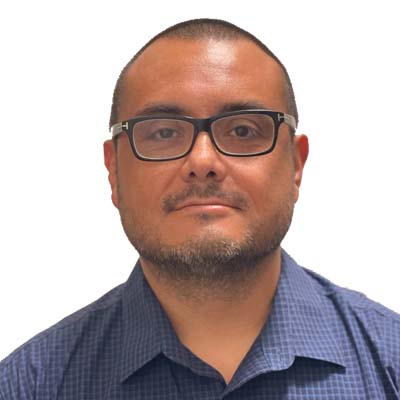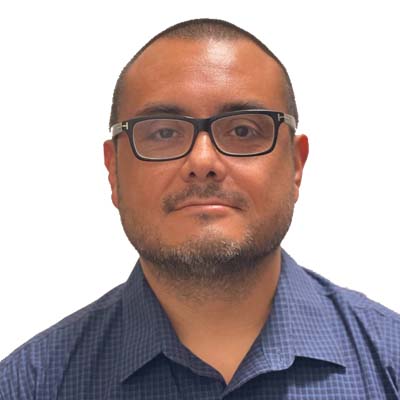Cultural Competence Is an Essential Skill
Fortunately, the tide is turning. Both the coronavirus pandemic and widespread social unrest of 2020 illuminated the systemic racism at work within our institutions. As a result, our culture is increasingly holding gatekeepers (including healthcare providers) to higher standards of cultural competence.
Granted, such expectations can provoke anxiety in clinicians, who may worry about saying the wrong thing or displaying unconscious bias. However, in my experience, improved cultural competence can actually ease provider stress over the long run. Connecting more deeply with our patients helps us to deliver more compassionate and collaborative care, leading to better outcomes. Over time, this adds up to greater career satisfaction and longevity.
For those interested in leveling up their cultural competence, here are three simple steps to take.
1. Examine Your Biases
We can’t understand other cultures until we understand our own. Nor can we engage effectively with diverse individuals without identifying our blind spots and assumptions. Most experts therefore recommend self-exploration as a starting point for developing cultural competency. This skill is best learned in a group setting, so take advantage of any training offered by your employer or within your community.
One key area to explore is your personal privilege. Having privilege doesn’t mean you never experience hardship. A privilege is simply an unearned benefit you receive because of your identity. For example, if you are a physician or advanced provider, you likely had the resources to pay your undergraduate tuition, buy your textbooks, and obtain clinical experience through paid or volunteer work. Your appearance and clothing may have allowed you to blend in on campus. You may also have been helped along in your academic career by secure access to food, housing, heat, and indoor plumbing. Contrast this with the experience of Sage, an Indigenous pre-med student living on a reservation.
Other areas to explore include your health-related attitudes and beliefs. Research suggests that many healthcare providers carry unconscious biases about certain cultural groups. They may believe that minority patients:
- Feel less pain and require less pain medication
- Report symptoms inaccurately
- Will not comply with treatment
- Are more likely to abuse substances
Contrary to popular belief, positive stereotypes can also be harmful. For example, Asian Americans are often considered a model minority. However, this can lead clinicians to miss signs of depression, anxiety, and substance misuse in Asian patients.
If you recognize any of these biases in yourself, nothing has gone wrong. Stereotypes are not signs of immorality or failure. They usually operate at an unconscious level as our brains seek to understand and organize incoming stimuli. Simply recognizing a bias goes a long way toward diffusing its power and mitigating any potential harm.
2. Educate Yourself
Engage your community. Immersion is the best education. Reach out to nonprofit organizations working on the social determinants of health in your community and volunteer. Rebuild trust between the vulnerable in your community and the health system by meeting the most vulnerable in the community where they are. Utilize your medical skills to assist with sports physicals, health screenings, or vaccination clinics. I established a Street Medicine program to provide services to the homeless in our county. Providing services alongside housing navigators and social workers in the homeless encampments has helped us to bridge that mistrust in the healthcare system. We have been able to learn from this community about how to work in interdisciplinary teams to address barriers to access healthcare and the social factors that affect health outcomes. This experience has helped myself and the group of health providers I work with to rehumanize this group and remember the reasons we went into medicine.
Diverse people spend a lot of time educating others about their experiences. Many nonbinary patients expend enormous energy explaining their pronouns. Patients with sickle-cell disease, anxiety, and fibromyalgia must convince clinicians to take their pain seriously. One way we can lift this burden from their shoulders is by educating ourselves.
Textbooks and journal articles are natural places to start. Sociologists have developed theoretical stage models for LGBT and racial identity development. These show us that accepting oneself as Black (or white, gay, Latino, etc.) is a lifelong path that humans travel at different paces. Knowing this allows us to better empathize with patients, colleagues, loved ones, and even ourselves.
Art, music, film, and literature can be enjoyable ways to build cultural understanding. Novels and memoirs provide texture, nuance, and historical context that theoretical models cannot. Consider diving into the fiction of Toni Morrison, James Baldwin, and Isabelle Allende or the poetry of Langston Hughes and Audre Lorde.
Finally, nothing deepens our cultural understanding like spending time with diverse friends and colleagues. Make a special effort to foster an inclusive social circle. If you find it easy to blend into a crowd, seek out activities and events where you will stand out.
3. Treat Patients As Individuals
While cultural groups share many experiences, customs, and beliefs, they’re far from homogenous. All include a full range of educational attainment, socioeconomic levels, political leanings, and personal beliefs. In New Mexico, for example, you might treat Latinos who are new immigrants and those whose families settled the area centuries ago. You might also treat recent arrivals who speak indigenous languages better than Spanish.
So while it’s useful to gain some background knowledge about a culture, be careful about assuming too much. Instead, use your learning as a guide to know which questions to ask. Approach patient interactions with humility and curiosity. And if a patient corrects you, be sure to thank them.
Cultural Competence Can Save a Life
Like repairing a wound or detecting a heart murmur, cultural competence is a skill that can be learned and improved through practice. At first, you may feel awkward, like you did when you sutured your first laceration. But with time, patience, humor, and goodwill, you will feel more ease and warmth in all your patient interactions. Who knows? By connecting with a patient who otherwise might have avoided the healthcare system, you might just save a life.
























